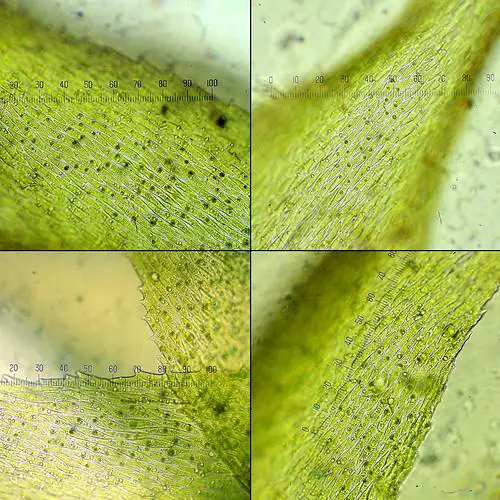Barbella: The Captivating Moss with Unique Charms
Affiliate Disclaimer: As an affiliate, we may earn a small commission when you make a purchase from any of the links on this page at no additional cost to you!

17855209259_6b63af0cdc.jpg from: https://www.flickr.com/photos/kochibii/17855209259/
Introduction
In the vast and captivating world of bryophytes, one particular moss species stands out as a true marvel – the Barbella pendula (Sull.) M.Fleisch., commonly known as Barbella. This remarkable member of the Meteoriaceae family has captured the hearts and minds of moss enthusiasts worldwide with its unique characteristics and ecological significance.
Background
Before delving into the intricacies of Barbella pendula, it’s essential to understand the broader context of bryophytes. These non-vascular plants, which include mosses, liverworts, and hornworts, are often overlooked but play a crucial role in various ecosystems. They are among the oldest land plants on Earth, dating back to the Paleozoic era, and have adapted to thrive in diverse environments.
Main Content
Morphology and Identification
Barbella pendula is a striking moss species that can be easily identified by its distinctive features. Its pendulous growth habit, with slender, drooping stems, is a visual delight. The leaves are lanceolate in shape, arranged in a spiral pattern along the stem, and often exhibit a glossy green hue. One of the most remarkable characteristics of this moss is its specialized reproductive structures, known as pseudopodia, which resemble tiny feet and aid in spore dispersal.
Global Distribution and Habitat
Barbella pendula is widely distributed across various regions of the world, including North America, Central America, South America, Asia, and Oceania. It thrives in a diverse range of habitats, from tropical rainforests to

19178987378_e0ccf915ef_b.jpg from: https://www.flickr.com/photos/kochibii/19178987378
temperate forests, and can be found growing on tree trunks, branches, and even rocks. This moss species is particularly well-adapted to humid and shaded environments, where it can form dense mats or cushions.
Ecological Roles and Adaptations
Barbella pendula plays a vital role in its respective ecosystems, serving as a microhabitat for numerous other organisms, including insects, spiders, and other invertebrates. Its ability to retain moisture and create a stable microclimate makes it an ideal home for these tiny creatures. Additionally, this moss species contributes to nutrient cycling and soil formation through the decomposition of its organic matter.
One of the remarkable adaptations of Barbella pendula is its ability to tolerate desiccation. During periods of drought, the moss can enter a state of dormancy, reviving once moisture becomes available again. This resilience allows it to survive in environments with fluctuating water availability.
Case Studies/Examples
In the Monteverde Cloud Forest Reserve in Costa Rica, Barbella pendula plays a crucial role in maintaining the delicate balance of this unique ecosystem. Its ability to capture and retain moisture from the frequent cloud cover helps sustain a diverse array of plant and animal life, making it an essential component of this fragile environment.

9fc1e663837d67bb606631739866ecd1.jpg from: https://www.pinterest.com/pin/silver-birch-betula-pendula-with-trunk-covered-in-moss-in-natural-woodland-highlands-scotland-photographic-print-mark-hamblin–201887995779294523/

mba-13922289.jpg from: https://www.agefotostock.com/age/en/details-photo/silver-birch-betula-pendula-bark-overgrown-with-moss-bayern-deutschland/MBA-13922289
Technical Table

C0415130-Fallen_Silver_Birch_Betula_pendula_leaves_on_Sphagnum_Moss.jpg from: https://www.sciencephoto.com/media/965218/view/fallen-silver-birch-betula-pendula-leaves-on-sphagnum-moss

5622e6df2ce9f1051a576c6c516b9db2.jpg from: https://openmuseum.tw/muse/digi_object/d3c69fc27fdd03291ec8fc9aa7341fc5

361cd7b2c6e913bc713ab84ca5330e57.jpg from: https://taieol.tw/pages/34891
| Characteristic | Description |
|---|---|
| Family | Meteoriaceae |
| Genus | Barbella |
| Species | Barbella pendula (Sull.) M.Fleisch. |
| Growth Habit | Pendulous, drooping stems |
| Leaf Shape | Lanceolate |
| Leaf Arrangement | Spiral |
| Reproductive Structures | Pseudopodia |
| Habitat | Tropical and temperate forests, humid and shaded environments |
| Distribution | North America, Central America, South America, Asia, Oceania |
| Ecological Roles | Microhabitat, nutrient cycling, soil formation |
| Adaptations | Desiccation tolerance, dormancy |
Conclusion
Barbella pendula (Sull.) M.Fleisch., or simply Barbella

Meteoriopsis-reclinata-MuellHal-MFleisch-A-Plant-B-Portion-of-branch-C-G_Q320.jpg from: https://www.researchgate.net/figure/Barbella-chlorodiclados-MFleisch-A-Plant-B-Stem-leaf-C-D-Branch-leaves-E_fig2_348089946
, is a remarkable moss species that deserves our admiration and appreciation. Its unique morphology, global distribution, and ecological significance make it a true gem in the world of

Barbella-chlorodiclados-MFleisch-A-Plant-B-Stem-leaf-C-D-Branch-leaves-E_Q320.jpg from: https://www.researchgate.net/publication/348089946_Taxonomic_study_on_Meteoriaceae_I_Reappraisal_of_some_species_of_Barbella_and_Pseudotrachypus

kiyosumiitogoke160309_2.jpg from: https://soyokaze2jp.blogspot.com/2016/03/blog-post_22.html
bryophytes. As we continue to explore and understand the intricate web of life on our planet, species like Barbella pendula serve as a reminder of the incredible diversity and resilience found in nature. Perhaps the next time you encounter this moss, you’ll pause and ponder the question: What other wonders lie hidden in the world of bryophytes, waiting to be discovered?
